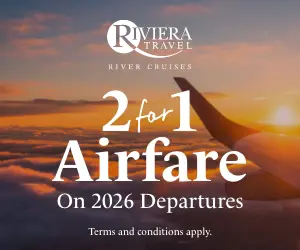Four Ways to Mirror Your Clients’ Travel Wants and Needs
by Steve GillickIn the movie Harry Potter and the Philosopher’s Stone, Harry stumbles upon the Mirror of Erised (“desire” spelled backwards) and sees himself standing with his parents, who had lost their lives years ago in a struggle with the evil Lord Voldemort. Professor Dumbledore explains that the mirror “shows the most desperate desire of a person’s heart.”
Indeed, mirror tales have been with us since Alice made her journey through the Looking Glass (a mirror) and the movie “Snow White” featured the Wicked Queen who rhetorically asked, “Mirror, mirror on the wall, who’s the fairest of them all?”
In the travel industry, “mirroring” is the process whereby the focus is placed on the client’s needs and desires, and this is accomplished by observing cues, interpreting clues, deciphering body language, and then bundling the results into a package of relationship-positive, sales-and-customer service-proactive actions that pave the way to a mutually beneficial business relationship.
Just a note of caution: Mirroring is not equivalent to imitating. Just because a client displays inappropriate behavior or uses inappropriate language does not mean that a travel consultant should “mirror” this behavior in an effort to make the client feel at home. They are what they are, but you are a tried and true professional under all circumstances.
Here are four ways to mirror your clients’ wants and needs. They are all based on relationship-building, facilitated through the sharing of information.
Destinations
- “Be the destination” is the credo of a destination specialist. They do this through knowledge, curiosity, determination, and passion, but they don’t have a monopoly on these traits. Any travel consultant worth his or her weight uses passion during the sale to echo enthusiasm for the client’s travel plans.
- All destinations have the right to be treated respectfully. Travel consultants have opinions and biases, but these should be used to assist the client in making wise travel decisions, not to dissuade them from travel plans on which they have their heart set. Mirroring means that you take the spirit of the holiday (beach, adventure, solitude, active, etc.) and counsel the client to make the best choices possible. As one traveler bemoaned during a rough-and-tumble adventure experience, “Daddy told me I should at least go to a place that had electricity and flush toilets. This is not exactly what he had in mind. I want to go home.”
Customer-Service Expectations
- Reading about customer service best practices or attending webinars or seminars can be a real eye-opener. The rule of thumb is to “surpass anticipated expectations”—meaning that until you get to know your clients well, you need to mirror how you think they’d like to be treated. A courteous greeting with a handshake, smile, and eye contact? Why not? Timely responses to phone calls and emails? You’re catching on. Providing and then honoring deadlines that you set to have information or itineraries and tickets available? You bet! What you are doing is reverse-mirroring. Your attention to detail and the service you provide to the client may in fact cause the client to do the same for you (i.e., return phone calls/emails and provide timely answers that you need in order to proceed with the booking).
Dress and Deportment
- The customer’s expectation of the product or destination being sold is usually a good indicator of how to dress for the occasion. Of course there are exceptions, but in general an ultra-luxury client may not feel at ease when greeted by a baseball cap, blue jeans, and running shoes; an adventure client likely would be caught off guard if greeted by someone in a bespoke three-piece suit. Dressing for the occasion means making your clients comfortable with what you are wearing (mirroring their comfort).
- And in the spirit of anti-mirroring, no matter what mood, temperament, or distemper your client adopts, your attitude is always “consummate professional”: smiling, positive, full of helpful suggestions and current knowledge based on the product or destination.
Atmosphere and Ambiance
- Agency: In an agency environment, it’s easy to create a sales atmosphere that mirrors your clients’ attraction to travel. Keep in mind the types of travelers in the year 2016. Some have called this the Esoteric Travel Syndrome (ETS) or the Global Positioning System (GPS) Syndrome, where travelers want “something else,” something new, non-touristy and unique, but always something of value. Posters, experiential destination displays (smell the fragrance/taste the snack), computer/video theatre (or desk), headphones to listen to the sounds of the destination—all cater to that travel excitement, not just mirroring the client’s travel thoughts but capturing them, enhancing them, and driving the sale.
- Career Travel Agents/Outside Reps/Home Based: While you may not be able to capture the atmosphere of a destination in your home or during an arranged meeting at the local coffee shop, you can still bring the spirit of exploration, discovery, relaxation, all-inclusives, and cruises with you through short, impactful video presentations, photos, experiential props (see above), and tales of your own experiences. At a recent meeting, someone took out his smart phone in the restaurant and handed it to me so I could watch a three-minute video on Tokyo. It was colorful, entertaining, exciting, and a unique way to draw me into the spirit of the city.
Mirroring in the travel industry is a dynamic strategy to involve the client in the destination, enhance the customer service experience, and help to cement the crucial client-travel consultant relationship.
Something to reflect on.
























